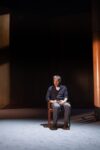This essay was first made available last month, exclusively for our Patreon supporters. If you want to support Full Stop’s original literary criticism, please consider becoming a Patreon supporter.
When antisemitism scholar Robert Wistrich died in 2015 at the age of 70, the field was crushed. One of the most dedicated academics studying Jew hatred, Wistrich had produced more than two dozen books, including a 1,200 complete history of antisemitism, A Lethal Obsession, and the popular book The Longest Hatred in 1992, which was turned into a PBS documentary and a UNESCO exhibit. When we trace the landscape of the study of antisemitism, much of the foundational work was done by Wistrich, a British-born Jew who studied in the US and eventually landed in Tel Aviv, where he ran the Vidal Sassoon Institute for the Study of Antisemitism. There he tried to synthesize one global story: antisemitism is still with us, persistent and growing, and coming from misunderstood areas.
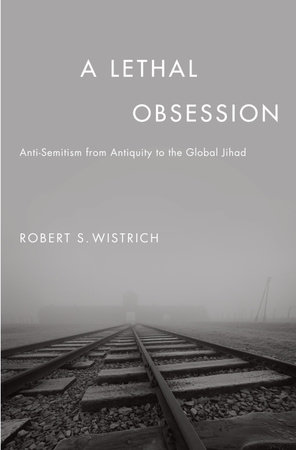
Wistrich was most notable, however, for talking about what he labeled the growing problem of Muslim antisemitism. Starting in the 1990s, he increasingly directed his eyes towards the “Muslim world,” where he alleged a particularly venomous antisemitism, hinging on a rabid hatred of Israel, which he never ceased to remind readers is the “Jewish state.”
“Contrary to various myths about widespread ‘Islamophobia,’ Jews are incomparably more likely to be objects of hate crimes,” says Wistrich in the concluding essay of his final book Anti-Judaism, Antisemitism, and Delegitimizing Israel. He alleges the press regularly mischaracterizes Israeli aggression and that anti-Israelisms “have steadily infiltrated the media, the universities, the churches, educated Western opinion as well as much of the contemporary European political elite during recent decades.” The same book is filled with rhetoric taken directly out of what is called the “counter-jihad” movement: a far-right politic that alleges Muslim Arabs are taking over the “West” and engaging in Holy War against non-believers.
For Wistrich, the problem seems to lie not with some Muslims, but with Islam itself. He says that Arabs were not necessarily angry with Israel because of the ethnic cleansing of the indigenous Palestinians, but because, as he says in The Longest Hatred, “essential aspects of the Arab-Muslim identity were thrown into question. For the eclipse of Islam threatened one of its central myths, that Allah had promised victory in this world to the followers of Mohammed” (224).
Wistrich’s publishing defined the consensus understanding of what antisemitism is, which put defending Israel at its absolute center. “Meanwhile the most embattled country in the world, surrounded by enemies out to destroy it and subjected to unprecedented levels of malice and demonization even by its ostensible allies, is the one nation whose economy, birth rate, and creative genius are in the most robust of health,” says Melanie Phillips in her essay in Anti-Judaism. “With the Islamic world stagnating in the grip of the death cult it has spawned, and with the west seemingly in the process of committing cultural suicide, it looks astoundingly as if beleaguered little Israel may turn out to be the last man standing.” Phillips is a British anti-vaccine advocate, who has taken a stand against queer rights and is regularly accused of Islamophobic conspiracy theories.
These scholars allege that the betrayers here are not Muslims, but the rest of us, most particularly those on the left who are critical of Israel. While there is a strain of antisemitism on the left, which is both very real and under confronted, the various academic institutes that often study antisemitism and the field of “antisemitism studies” as a whole have made left-wing antisemitism their focus. Antisemitism emerged on the left inside of the critique of capitalism, which pulled on older strains of Christian antisemitism that laid Jews to blame for every financial woe, from taxation to usury. As financialization and market abstractions ushered away “traditional life,” Jews were often slotted in as an easy enemy. This type of antisemitism has continued today in the form of conspiracy theories (Rothschilds, anyone?), but also at the fringes of anti-Zionism.
But this is not the left antisemitism up for discussion in the Vidal Sassoon Institute and several other beacons of “antisemitism studies.” Instead, it is the apparent “delegitimization” of Israel, a state that must receive unquestioning blanket support if accusations of antisemitism are not to be applied. Wistrich has contributed a number of articles that suggest there is an Islamist/Socialist axis that delegitimizes Israel and propagates Jew hatred. While there are very real criticisms to be leveled at anti-imperialist movements who make “the enemy of my enemy” calculations with despotic regimes, Wistrich’s analysis does not critique the left for failing to live up to its promise: He thinks something’s rotten at its core. Alvin Rosenfeld, who runs the Indiana University Press’s Studies in Antisemitism series, has taken up this issue as he published his own pamphlets and books taking on the left’s alleged antisemitism, including indicting anti-Zionist Jews as collaborators. Books in their series with titles such as Anti-Semitism and Anti-Zionism on Campus tell the stories of professors who were “silenced” by Palestinian rights campaigners. In 2019 Indiana University Press published Jews in Arab Countries, an under covered history to be certain, yet written by Georges Bensoussan, who faced hate crime charges in 2015 in France over comments he made about Muslims (he was eventually acquitted).
Like far-right bell ringers before them, these figures suggest that the left’s allyship with “mass immigration” puts European Jews at risk, changing the demographic composition of the continent. Positioning himself to the right of the neoconservatives in his contribution to Wistrich’s book Anti-Judaism, Guy Milliere says that “[under George Bush’s] presidency, a majority of European leaders acted according to the unwritten rules of Eurabia. They placed themselves on the side of the most extreme form of Arab nationalism, the brutal dictatorship of Saddam Hussein, and did all they could to appease radical Islam.”
The term “Eurabia” stands out in that quote, but it is common in this approach to antisemitism. The term originated with far-right Egyptian-born Jewish writer Bat Ye’or, whose work Wistrich helped resurrect into good standing. Ye’or suggests that Europe is being “Arabized” and that the indigenous whites are being replaced with a totalitarian influx of Muslim invaders. Her pamphlet “Dhimmitude” tried to undercut one of the central realities of Muslim antisemitism: that it did not originate in Islam. Most who study the history of antisemitism will note that the bloody and torturous variety of Jew hatred found in medieval Europe was a Christian construct, and while Jews were persecuted as a minority in Muslim countries, there were not the same pogroms and persecutions, and current antisemitism in Muslim countries is partially imported from the West. Ye’or sees it differently and thinks it is from the Koran, which she sees as sending Muslims on a totalitarian and genocidal mission. Ye’or is critical for the European far right, including PEGIDA (Patriotic Germans Against the Islamization of Europe) and the English Defence League, which try to link up a philosemitism in the form of pro-Israel sentiment with the nativist populism sweeping Europe. Her work was incredibly influential for Anders Breivik, the white supremacist terrorist who enacted the most severe attack in Norway’s history, killing 77 people.
It would be easy to dismiss these “institutes” as just another example of insurgent right-wing thought, “counter-jihad” rhetoric countenanced in academic garb. But this is where the funding and even some legitimate scholarship is done; in between the invective and panicked allegations of Muslim duplicity is scholarship of value. More than this, there are currently no alternatives. The rest of the academic world has left the subject behind because we, ostensibly, already have institutes and authors to cover this subject. This situation is not inevitable, but only the result of the political right staking their claim to the subject of antisemitism.
Antisemitism Viewed from the Right
This shift in perspective as to what qualifies as antisemitism is part of the attempt by the right to invite Jews to fight the “real enemy,” Muslim immigrants. There is now a “Jews for the Alternative for Deutschland” group within Germany’s far-right AfD party, despite open antisemitism from many party leaders. Some of PEGIDA’s loudest defenders against accusations of Nazism has come from Jewish members, who have joined the movement to fight what they are alleging is the real source of rising antisemitism. While the Jewish establishment has largely condemned these groups, the rhetoric they utilize about “Muslim invasion” is not that far from that employed by Wistrich and others.
The creation of this “new” type of far right, typified by what Matthew Goodwin and Roger Eatwell label “national populism,” is a type of disingenuous philosemitism. In an effort to show a break from the past of open fascism, such as in the case of the AfD or the Front National (now the National Rally party), many far-right organizations looked to attract Jews to a common cause of victimizing Muslims. This is an attempt by these organizations to “whitewash racism” and then cherry pick from certain perceptions (or types) of Jews, primarily by associating Jews and Judaism with the farthest reaches of Israeli nationalism. As Hannah Rose discusses in her report “The New Philosemitism” for the International Centre for the Study of Radicalism, the Eurabian conspiracy theory positions Israel as a “Western” nation under threat by Muslims, and therefore people will hear surprising statements of support from groups like the EDL defending Israel. This far right tries to then exaggerate Muslim antisemitism by mobilizing the rhetoric of Judeo-Christianity, positioning Judaism as European so that Islam can be “Otherised.” This shift from ethnic nationalism to cultural nationalism, typified by what scholars like David Renton or Enzo Traverso have labeled a type of “post-fascism,” sees a tactical advantage in building alliances with Jews, but only in as much as Israel can become the center of a proxy war.
“[Support] for Jewish people within the Judeo-Christian family is dependent on secularism, Europeanism and the erasure of a historical culture that persecuted Jewish people,” writes Rose. “It is due to the fact that philosemitism rests on a profile of Jewishness assigned by the far right that support for Jewish people can be seen not as genuine but as conditional and circumstantial.”
In Hungary, which has created a stir for the nationally funded campaign against George Soros, who they present as a shadowy financier controlling immigration into Hungary, President Viktor Orban has also worked to present himself as a friend to religious Jews and an ally of Israel (a position also attempted by the fascist Jobbik party). This is a position of other Visegrad countries who have their own history of antisemitism, to support Israel against criticism as an assumed allyship to their real enemy: Islam. In Poland, just as they were establishing laws that effectively deny the reality of Polish participation in the Holocaust, they are also hosting Benjamin Netanyahu who was celebrating the “righteous Poles” who defended Jews. This has been part of the process by which Netanyahu has created alliances amongst the most illiberal leaders around Europe, often ignoring blatant antisemitism for assurances of trade and collaborative power. The perspective seems simple: support for Israel at any cost.
Bat Ye’or fits into the center of these changes, with her Eurabia conspiracy theory setting the tone in how antisemitism should be viewed. For example, Palestinian and Arab reactions to Israel are portrayed not as the result of land seizures and ethnic cleansing, they are allegedly because Jews stepped out of their “dhimmittude.” As Reza Zia-Ebrahimi writes in his paper chronicling the similarities between the Eurabia conspiracy theory and the antisemitic forgery The Protocols of the Elders of Zion, Bat Ye’or portrays Islam as totalizing over its subjects and portrays “an antihistorical, immutable and violent essence in Muslims.” Her vision of Muslims is as both homogeneous and powerful, cooperating with European elites to enrich their bank accounts while swelling over borders to reconfigure Western nations, kill off European identities, and refuse to assimilate.
“[The] essentialization of a large and arguably diverse population into a monolithic group animated by only one will, that of dominating Europe and ultimately obliterating Western civilization,” is the shared experience that Zia-Ebrahimi discusses, labeling it a form of “conspiratorial racialism” that forces both Jews, in the case of the Protocols, and now Muslims, with Eurabia, into a position of a racialized Other. These theories are not unlike Soros conspiracism coming from the same political Right that lionizes Israel itself.
Wistrich was one of the most enthusiastic academics towards Eurabia, bringing Bat Ye’or to Hebrew University in both 2007 and 2011, despite refusal from professional historians to value Ye’or’s work. He named a chapter of his magnum opus, A Lethal Obsession, “Eurabia,” where he discusses the supposed “alliance” between the left and Islamism, who work in concert to attack the West and make it ripe for demographic replacement. This mirrors white nationalist books like Camp of the Saints, portraying Arab immigrants as invaders pouring over the borders, destroying the very essence of Europe to remake them into a Caliphate of Critical Race Theory.
Part of this is from the right-ward turn in Jewish politics, particularly in Israel, where far-right Zionisms are couched in the language of realism or entitlement. Israel is positioned as the only protectorate for a Jewish people constantly under siege, whether by pogroms or the Third Reich or antisemitic Arabs. “The way I learned [about antisemitism] when I was growing up is that it’s this ancient, baseless hatred, unconnected to anything. It’s irrational and indelible, and it’s a unique kind of hatred that is reserved for Jews,” says Morriah Kaplan of the Jewish Palestine solidarity organization IfNotNow, who works to ensure an intersectional analysis of antisemitism is consistent in their work. “A lot of the really crucial and transformative work that’s been done by folks on the left [is] trying to actually put antisemitism in context.”
A Sea Change
There is a historical caricature of Jews as so monolithically left-wing that they held the reigns of Bolshevism: They were at the front of labor strikes and the civil rights movement; they were socially liberal and repudiated the right-wing regimes who saw them as a 5th Column. Around 1950, shortly after the creation of the State of Israel, a shift occurred that Enzo Traverso called “the end of Jewish modernity.” Israel profoundly changed Jewish life, but so did the Holocaust. The illusions had been crushed, maybe “social justice” simply wasn’t enough.
Now there is an increasingly right-ward shift in, perhaps not the Jewish community as such, but in the institutional structure of many pieces of Jewish life (this shift is seen in the interplay between policy and Jewish NGOs that Lila Corwin Berman labels the “Jewish Philanthropic Complex”). Israel is the centerpiece of the West’s supposed solution to antisemitism, so an attack on Israel is an attack on the immune system of global Jewry. Political radicalism itself has also become suspect. It is obvious what ethnic nationalism can result in: Auschwitz stands as a stark totem of cruelty in the collective Jewish consciousness. And on the left, anticapitalism and, increasingly, anti-imperialist movements have used the image of the Jew, both explicitly and implicitly, as the proxy of the capitalist or ruler. So a decision had to be made: Israel must be protected, and centrism, if even a bit liberal, must be maintained.
This shift was not applied neutrally. Because Israel became the barometer, certain communities got singled out more acutely. Muslim Arabs are an obvious target, not only because of antisemitism both in Muslim majority countries and among Muslim immigrant communities, but because it is mixed with a volatile anti-Israelism. Muslims exist as a proxy for Palestinians, who are, by any measure, the military opponent of Israel and therefore the “threat” to the survival of Israel. Muslim antisemitism then takes on a special category. It has the ability to destroy Israel and therefore is portrayed as uniquely threatening. The left features in this discourse as the “abandoner” of the struggle against antisemitism as they barrage Israel with criticism, now in the form of the Boycott, Divestment, and Sanctions (BDS) movement.
Black antisemitism lends an additional piece, entering the conversation in the 1960s with incidents like the largely Jewish teachers strike in New York City in 1968 that created clashes with the parents of Black students demanding community control in education. Many Black urban neighborhoods were previously Jewish neighborhoods, so it was not uncommon to see low income BIPOC communities with businesses and housing owned by Jews, creating a “middle person” effect that perpetuated tension, and, therefore, antisemitism was an easily available channel for anger.
The rightward shift then set the priorities. This reality should not let anyone off the hook. There is a profound problem with antisemitism on the left, where it is often invisibilized. This is a piece of the crisis, but even this is missing from much of the world of “antisemitism studies.” Instead, how Israel is represented has become the litmus test, and when someone fails to adequately support the “Jewish State,” they’re blamed for perniciously vague “radicalism.”
This creates a model for fighting antisemitism where Jews stand alone. A central theme in the world of “antisemitism studies” in the various institutes is a defense of the uniqueness of both antisemitism and the Holocaust. One road to soft Holocaust Denial and towards the erasure of Jewish suffering is to undercut the significance of the Holocaust, make it just one of the myriad of genocides. But Auschwitz has a uniqueness to it: the Holocaust was about a pathological hatred of Jews, so much so that the Nazis were willing to lose everything, including their Thousand Year Reich, just to kill them. Antisemitism, while having some elements in common with racism of other types, works differently as well. It is founded in a conspiracy theory about social change, modernity, and the breakdown of “traditional” experiences; it is a house of mirrors caricature of how you fight for liberation, using “the Jew” as the image for all demonic suffering. But Wistrich and the institutes have taken this one step further with its bifurcated approach of Israel and centrism as a solution, taking Jews out of solidarity with other people experiencing oppression. All forms of oppression have some uniqueness to them, and learning from each other and understanding that liberation is bound up in all of us is the key to really undermining the violence of white supremacy, including antisemitism.
While the fight against antisemitism is not solely the province of think-tanks at universities, academic discourse is still important. This scholarship (a term that is used fast and loose when discussing some of this work) helps define antisemitism, particularly in legislation, which has increasingly been pushed to delegitimize Palestinian solidarity movements on campus. This culminates in how the International Holocaust Remembrance Alliance definition of antisemitism, which is increasingly used despite allegations of politicization, reframes much of the research done. Furthermore, the framing of BDS as antisemitic led to high profile attempts at silencing activists through draconian legislation. “The battle with the BDS, and defining the BDS as antisemitic, are parts of a wider process of shaping Israeli identity and strengthening its Jewish elements,” says Shlomo Abramovich, explaining how part of defining antisemitism in relationship to Israel is about shifting Jewish identity to center on Israel as well.
There is a term that this Wistrich approach uses: New Antisemitism. The story goes that the first wave of antisemitism, largely Christian, was religious antisemitism. It was “anti-Judaism,” and while holding a similar structure to antisemitism contemporarily, it was based in the “satanic” nature of Judaism itself, and conversion away from Judaism was possible. The second wave was “racial antisemitism,” where Christian antisemitism was secularized as Europe modernized and Jews were understood through increasingly popular “race science.” Jews couldn’t convert, so mass extermination was the most decisive solution to the Jewish Question. Later a new type of antisemitism supposedly emerged: political antisemitism, which attacked Jewish political collectivities, culminating in the State of Israel. Anti-Zionism is implicated by this discourse, the most distinct example of New Antisemitism because it allegedly distorts Jewish power through demonization, delegitimization, and double standards (the “three D’s” created by right-wing Israeli statesman Natan Sharansky). There are certainly a few antisemitic tendencies in some anti-Zionist movements, particularly those that see Israel as “all powerful” or Jewish lobbies running international politics, but New Antisemitism has also been a blunt instrument used to hammer the Palestinian movement.
“When it comes to Robert Wistrich and the ‘New Antisemitism’… It’s a weaponization of the term antisemitism and it has completely conflated antisemitism and anti-Zionism,” says Cas Mudde, an expert on far-right politics. “Antisemitism has remained a major problem among people who are very critical of Israel, but you definitely don’t need to be antisemitic to criticize, fundamentally, the occupation, as many Jewish Israelis have… So I think the ‘New Antisemitism’ is not a serious academic definition, it’s a political definition.”
College campuses are central to this discourse as students and faculty fight over the BDS movement, with allegations of both racism and repression tossed about. The Cohen Center for Modern Jewish Studies from Brandeis University named their report “Hotspots of Antisemitism and Anti-Israel Hostility on US Campuses,” a common phraseology, which confuses anti-Israel with anti-Zionism with anti-Judaism with antisemitism. The message this sends is that antisemitism is ever present, deep within the fabric of the contemporary left youth movements, and that it is part of the campus wars over political correctness. It may seem like Israel has been canceled, but it is actually the Jews.
It is easy to poke holes in claims of New Antisemitism that lack merit, which many on the left have done at their own peril. It is not uncommon to hear jokes about accusations of antisemitism inside of Palestinian solidarity spheres. When I was in a Students for Justice in Palestine chapter, I often heard that if you haven’t been accused of antisemitism, then you aren’t doing enough to free Palestine (this was usually matched with a quip about Alan Dershowitz). But reality is usually more muddled and greyer than this, and problematic rhetoric did sometimes seep in. Social movements exist in uneven consciousness, and anger often gives way to folk wisdom that can bring its own baggage with it.
Likewise, antisemitism is deeply laid into the fabric of the West, and its unique structure thrives on distorting impulses towards liberation. Modern antisemitism secularized earlier Christian antisemitism, pairing Jews as responsible for the constituent pieces of modernity: legalisms, finance capital, abstraction, cosmopolitanism, internationalism. These arguments did not disappear, and instead they are often easily grafted into movements fighting essentially the same issues: modern capitalism, imperialism, alienation, inequality. Antisemitism originates in the impulse to confront your oppressor, but it confuses who and what that oppressor is. In the Palestinian movement, there is a small corner who sees the problem with Israel as its Jewishness rather than its colonialism, but this is still a small minority. The problem is that the left often simply does not know how to understand Jews since Ashkenazim are largely white (and have white privilege). Jews can also be oppressors themselves, even if they were, in effect, acting on whiteness rather than Jewishness. While the left usually confronts the disparate impacts of their political campaigns, particularly if the targets are minorities, the impact on Jews is often either unseen or unimportant.
But while New Antisemitism may not be a total illusion, the term mainly has legitimizing effects for the right. By reframing the conversation on antisemitism as one strictly of Israel, it makes Israeli’s state health part of how the effectiveness of policy confronting antisemitism is measured. This is often done disingenuously, such as organizations like the Zionist Organization of America making accusations of antisemitism while cozying up to actual antisemites like Steve Bannon, but they also seem to really believe it. The State of Israel was a massive achievement imbued with near mystical powers of Jewish safety, and now as it behaves like any other state (or so it is claimed), some anti-Zionists are demanding Jews as a collectivity answer for an almost medieval set of alleged wrongs. So the various “institutes” play a role in collapsing anti-Israelism into anti-Semitism, which influences a change in everything from research to policy. The Institute for the Study of Global Antisemitism and Policy, which puts out reports about antisemitism that often conflate criticism of Israel with antisemitism, received 80% of its funding from Israel in 2018, amounting to $445,000. Internal documents showed that part of that funding went to the institute’s Oxford conference where they reproduce this analysis by training cohorts on spotting antisemitism. Organizations like Canary Mission are part of a cottage industry of labeling Palestinian rights activists as antisemites or traitors, giving special attention to Jews with organizations like Jewish Voice for Peace.
Reclaiming the Fight Against Antisemitism
The fight against antisemitism remains of such critical importance that we can’t afford to let it become a political football for the right, and instead have to refashion our perspectives on it to something more useful. On October 27th, 2018, 11 people were murdered at the Or L’Simcha Conservative congregation in Pittsburgh by a white nationalist. On April 27th, 2019, three were killed with an AR-15 style gun at Chabad in Poway, California. On December 10th, 2019, two people opened fire on a Kosher supermarket in New Jersey, killing two, and just two weeks later an orthodox Jew was stabbed in Monsey, New York. Shootings like these occur at regular intervals in the US. Meanwhile, the violence against Jews is so severe in many European countries that synagogues and Jewish schools look like securitized fortresses. While this comes largely from the far right, which includes far-right Islamists, this violence is rarely discussed on the left since allegations of antisemitism are so often assumed to be simply the province of disingenuous claims from the political right. This played out in spectacular fashion during the 2019 Labour Party elections, where even the American Left (which wrongly saw Jeremy Corbyn as the British analogue of Bernie Sanders) joined a chorus of angry and dismissive invectives against those raising concerns over antisemitism in the party (largely because the Tories disingenuously used the claims to attack Labour). Instead of silencing their critics, it helped them lose an election—an example of why dismissing claims of antisemitism just weakens the left rather than fortifies it.
Because conservative voices like those found in the “institutes” has taken over the issue of antisemitism, the ground has necessarily been ceded to the right. The only way to challenge their perspective is to consciously take it back, to address antisemitism on our own terms, and to do it sincerely and with the same determinism we have on all fights against oppression.
Historically, antisemitism was clearly a form of structural oppression, which kept Jews separate and intensely marginalized, and part of the left has, at times, understood this. And over the decades, there has developed a sort of “counter-canon” of literature that discusses antisemitism, and how to fight it, from a distinctly left-wing perspective, one that does not rest on the two-pronged approach of centrism and Israeli nationalism, but instead sees antisemitism as deeply vested in the inequalities of modernity. This sort of liberal Zionism (which is, more and more, de-emphasizing the liberalism) sees solace in maintaining the reins of capitalism and statecraft because looking for something better has too many risks to be comfortable.
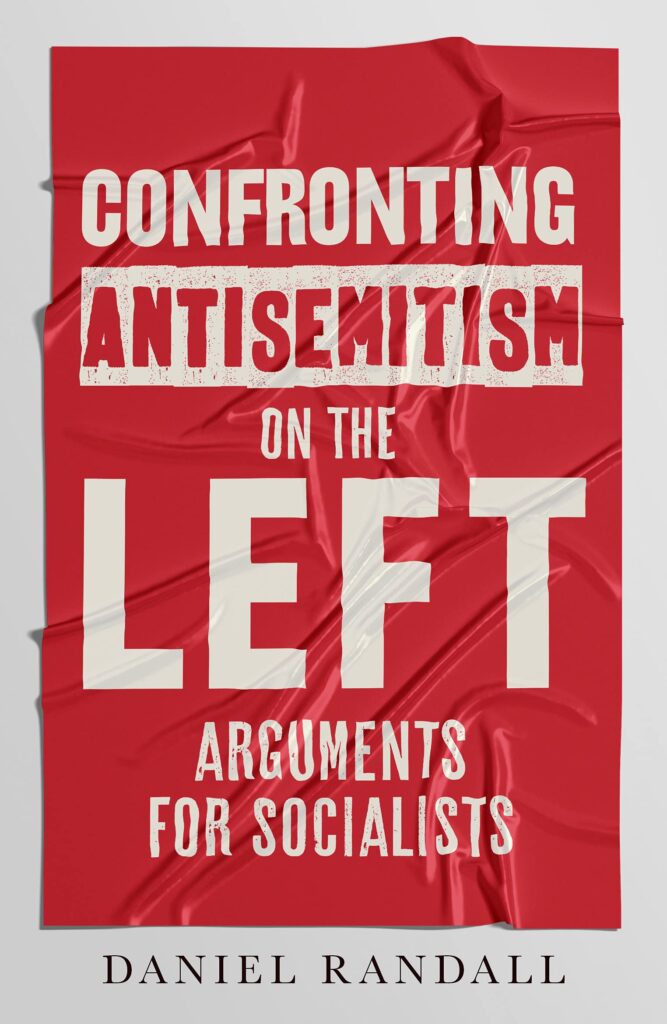
Speaking with me in a recent interview following the publication of his book Confronting Antisemitism on the Left, socialist trade union organizer Daniel Randall said: “There’s also a tendency amongst some critics of left antisemitism to flatten out distinctions and disputes within the left itself, and see ‘the left’ as a whole as the problem. Sometimes there is also an attempt to draw a causal link between antisemitism and any radical critique of capitalism at all, as if the former is an inevitable outgrowth of the latter.” Randall himself is an interesting model of what a fresh, alternative perspective on this issue can be. Born into a Jewish family, Randall joined the Trotskyist group Workers Liberty, one of the few British radical organizations to make fighting antisemitism a priority. Within this, he has helped to build up a base of analysis that refuses the “red baiting” of right-wing “institutes,” yet reclaims the struggle on the left’s terms.
One of the most essential pieces of this “counter-canon” of literature on antisemitism comes from Critical Theory, more correctly called Frankfurt School Marxism. Starting with the work of the philosophers Marx Horkheimer and Theodor Adorno, a relatively large collection of left scholars traced antisemitism to the unfinished equation of post-enlightenment “rational” society and capitalism. Moishe Postone saw that a structural antisemitism was present in the West, and now internationally through globalization, and this existed in the “commodity form”: the way our society processes different parts of capitalist production. The “good” production is that done by physical bodies in the factory or on the farm, and the “bad” production is performed through abstractions and financialization, positions often historically stereotyped as Jews. As we entered the period of modern antisemitism, the caricature of the Jew was placed as the center of all these abstractions, so much so that they became bound up with one another. And further, experiences of oppression and alienation were then cast onto institutions (such as a vague “bankers”) and people (such as the Rothschilds) stereotyped as Jewish. Today this process of Jewish coding has escalated, including on the left, and this thinking bifurcates capitalism in the same way the far right does. There is the “good capitalism” of the shopkeeper, “main street,” and the artisan, and the “bad capitalism” of the financial sector. Both of these are equal parts of the same system, but our subjectivity robs us of perspective and therefore continues the process of reproducing underlying antisemitic narratives and impulses.
These ideas are a part of an entire field of left-wing critique that has seemed to disappear from left discussions on antisemitism. For instance, the work of Marcel Stoetzler, Sina Arnold, Werner Bonefield, and dozens of others, who analyze the way that capitalism and statecraft reproduce Jew hatred, often goes unheard in discussions of antisemitism. In Germany these analyses have more currency on the left (for obvious reasons) in the creation of the “anti-Deutsch” trend, which sees Jews as central for questions on fascism and nationhood, though also veers into the some of the same Israeli jingoism and islamophobia as the right does.
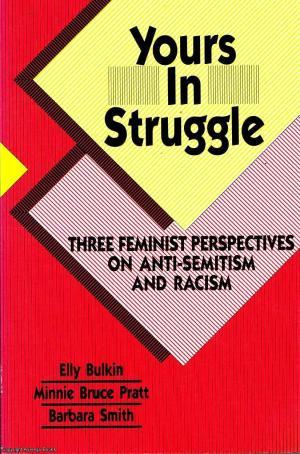
Another forgotten piece of left confrontation with antisemitism comes out of the emerging world of Jewish feminism in the 1970s and 1980s, where organizations had to wrestle with racism and antisemitism in the women’s movement and the role of women in Jewish life. Writers like Adrienne Rich and Elly Bulkin worked from a space of multicultural cosmopolitanism that saw their Jewishness as a necessary piece of the tapestry that made up liberatory organizations, which means that antisemitism on the inside of their movements had to be dealt with just as much as outside. Books like Yours In Struggle were written from a place of conversation, where women of different experiences were invited to live in collaboration, yet these are rarely discussed outside of historical retrospectives on feminism’s pasts (and usually out of print). You can find collections for magazines like Chutzpah or Breira that took these issues seriously from a Jewish left perspective but have gone the way of most political magazines of the era. Magazines like Spare Rib and Lilith were also part of this emerging intersectional feminism, refusing to de-prioritize the fight against antisemitism while working it into a multicultural framework. This means finding our way to confronting antisemitism as part of a larger, interweaving system of oppression. Just because antisemitism is unique doesn’t mean it is disconnected from other types of racisms, nationalisms, or religious hatreds.
“There is sometimes a tendency to treat antisemitism as the ‘ur-hatred,’ the primal and original bigotry, in a way that implies it’s innately worse than other bigotries or even that it’s historically transcendent and therefore immutable,” Randall told me. There is a way of acknowledging the uniqueness of anti-Jewish oppression while working it into common solutions that see shared liberation as the goal, yet as Randall argues, “Approaching antisemitism in an abstract, ‘single issue’ way will, I think, blunt any attempt to properly analyse and confront it.”
Much of the left’s shift away from focusing on antisemitism came from a change in the left itself; and the Jewish feminist projects themselves evolved, some of them becoming the New Jewish Agenda in the 1980s. This organization brought progressive Jews together in a singular organization working on a variety of issues, yet refused to shy away from those, such as Israeli treatment of Palestinians or antisemitism, that Jews had special relationships with. Antisemitism was seen with incredible clarity and was written about from a perspective that saw fighting its manifestations (including in the international context of Argentina or Iran) as part of liberatory politics. Most were “two-staters” on Israel but demanded a consistent and respectful politic on Israel from the left, refusing to capitulate to hyperbolic characterizations of Israel that erased Jewish suffering. NJA was only one piece of the Jewish New Left, but that explicit integration of both Jewish identity and radical politics lent itself to be its own perspective that brought the fight against antisemitism to the heart of the politics of freedom. The legacy of NJA was profound and helped pave the way for a huge number of radical and progressive Jewish groups, from Jews for Economic and Racial Justice (JFREJ) to Bend the Arc. Pamphlets like JFREJ’s “Understanding Antisemitism: An Offering To Our Movement” and April Rosenblum’s “The Past Didn’t Go Anywhere” take some of the heady ideas used to make sense of antisemitism and then gives them back to activists. The joint effort Jews Against White Nationalism is a perfect example of this synthesis.
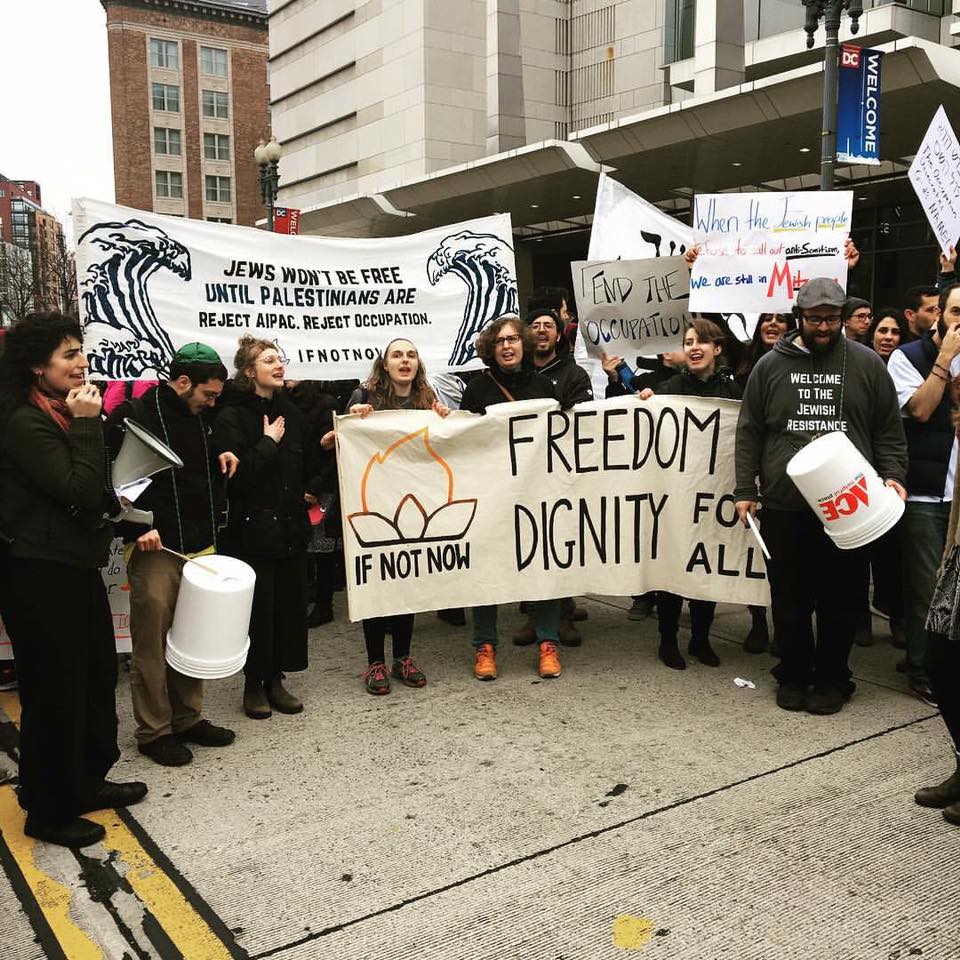
Organizations like IfNotNow, while not primarily focused on antisemitism, are integrating an intersectional analysis of antisemitism in an effort to arm those on the left to fight it and to create a counter-narrative to the right-wing voices who equate criticism of Israel with antisemitism. Wider left-wing projects like the anarchist-leaning Institute for Social Ecology has made antisemitism a cornerstone of their educational programs.
Antifascism is another intervention into this. More than just a response to the growth of the far right, it has provided an expanded insight to the left it is a part of. Because of the centrality antisemitism has had in fascism, and the entryism of far-right ideas into weak areas of the left, antifascism is positioned to see a particular nuance. Writing from people like Spencer Sunshine, Zoe Sasmudzi, and others centered questions of conspiracy theories and Jews as a critical part of mobilizing the far-right, problematic forms of anti-Zionism, and even the populism of Occupy Wallstreet. Antifascism brings a history along with it: piles of books, manifestos, movement documents, and histories, where the “Jewish Question” was an essential piece of strategy. This has expanded out from movement spaces, and there is a growing library of antifascist literatures, with everything from the “Fascism and Far Right Series” at Routledge to the myriad of radical publishers who are finally including literature on antisemitism through antifascism.
This has extended into the world of far-right monitoring, which has, at times, fallen into the same trap as the “institutes.” This is especially true with the Anti-Defamation League, which has also made support for Israel a shibboleth for antisemitism, and even more thoroughly in the Countering Violent Extremism (CVE) world that often gets criticized for equivocation across the political spectrum. Political Research Associates has been known particularly for taking a consistently progressive perspective while keeping the fight against antisemitism central, which has led to some of its most dynamic essays, such as Eric Ward’s now classic essay “Skin in the Game,” which unpacks how antisemitism is a linchpin of anti-Blackness and white nationalism.
The goal is to return the struggle against antisemitism to the larger fight against white supremacy and oppression, which is why “safety through solidarity” has become such a common rallying cry. Antisemitism’s uniqueness, just like the uniqueness of all forms of oppression, can be maintained while acting in concert. We don’t have to go this alone, with enemies on all sides. The young Jewish left is taking up this fight as they wrestle a seemingly hegemonic network of NGOs trying to define antisemitism, and Jewish identity, on Israel.
“Continuing this kind of production of theory and analysis is essential. We all need to keep writing, debating, thrashing the issues out,” says Randall. “If there’s a common thread, an element that needs to be present in the confrontation with all forms of antisemitism, it’s a drive to educate against conspiracy theories, and promote a politics of liberty, equality, and solidarity.”
Literature is only a piece of it, but an important one. The depth of antisemitism has to be reframed so that we can develop tools to confront it, not to simply cast blame on other marginalized communities or eternalize antisemitism as justification for solipsistic nationalism. Emerging voices are now developing a new canon of literature that takes antisemitism just as seriously yet developed their toolbox in the streets as they marched against police violence or locked down in front of ICE transportation centers. And when we incorporate that entire library of experiences, we realize that we have so much more than we started with, and that the vast array of conservative voices looking to cast blame at the left for antisemitism are actually quite small. Wistrich is not the figurehead of this struggle, we are.
For more on the counter-canon, see Shane Burley’s Antisemitism Viewed from the Left: A Reading List.
Shane Burley is a writer and filmmaker based in Portland, Oregon. He is the author of Why We Fight: Essays on Fascism, Resistance, and Surviving the Apocalypse (AK Press, 2021) and Fascism Today: What It Is and How to End it (AK Press, 2017). His work has appeared in places such as NBC News, Haaretz, The Daily Beast, The Baffler, Al Jazeera, and Jacobin.
This post may contain affiliate links.





